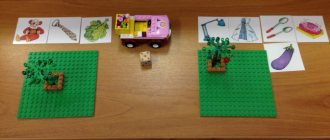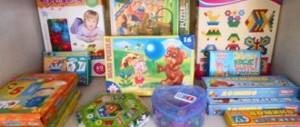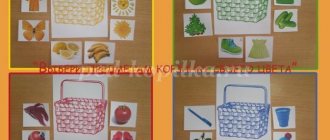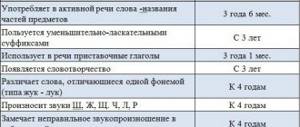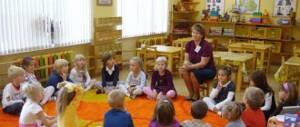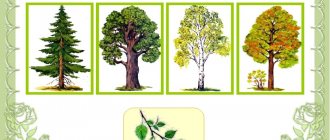Although chess is a rather difficult game, children really like it. This applies not only to teenagers, but also to preschoolers. There are many reasons for this: getting pleasure from such leisure, improving mental development, logic, self-education, and attentiveness. This activity fosters concentration.
Almost all doctors approve of chess, considering it very useful for any child. Even active children become more diligent, can concentrate and delve into the game process. In general, chess does a good job of developing a person’s character from childhood. Therefore, many parents decide to send their preschool daughter or son to chess courses.
How to teach chess to preschoolers
In general, the main function of playing chess for a child is the formation of visual and figurative thinking. The preschooler himself becomes more diligent, thoughtful, attentive and purposeful. Classes also teach the child not to despair and not to be upset when failures occur. There is a desire to defeat an opponent. Here are some tasks and goals of the chess game:
- developing interest in the game;
- mastering new concepts in chess (field, board, piece, move, position, interaction);
- development of analytical and logical thinking;
- ability to establish simple relationships, solve problems independently;
- ability to act according to established rules;
- mastering the basic principles of chess;
- practical use of knowledge.
The preschooler will also learn to evaluate his position during the game.
Classes have a particularly good effect on attentiveness, concentration, and logic.
The importance of chess for child development
What chess develops in younger children:
- To set a goal and diligently pursue it - you need to build connections, logical chains and calculate the right path to victory. Children cannot do this, but the game of chess allows you to gradually expand the scope, increase the number of tasks, and transform possible ways to complete them.
Chess
- Thinking that allows you to make non-standard decisions within the framework of your system of actions is also very important. The framework imposed on us by society, parents, and school is a limiter of our capabilities. And chess allows you to break down boundaries, step over them and see the world that opens up outside.
Note! The child does not yet have enough experience to use the standards. He begins to learn to build logical chains and does not understand that there may be limitations somewhere, so his mind looks for ways to solve his problems where an adult applies standards.
- Willpower and endurance. Interest in sports and the desire to win cultivate willpower. The kid understands that if you try and think, your efforts will be rewarded. Chess teaches that in order to achieve a certain result, sometimes it is necessary to wait for time, to choose cold calculation rather than emotions. Perseverance also develops willpower and builds character.
- Calculating all the moves and patterns in chess to determine the most profitable solution is training logical thinking and mathematical abilities. Methodology for teaching chess like real life: the loss of some assets (chess pieces) in life (chess game) with rational calculation provides an advantageous position.
- Creativity is also developed through playing chess. The children lead the game like a play: they distribute roles, the play of whites and blacks is like good and evil, a tragic ending for one and a triumphant end for the other. In any case, an open chess lesson in a preparatory group will have a sensation, as it will act as a theatrical performance.
- Training concentration and attention with the help of chess will allow the child to be more collected. Stopping at one object and remaining restrained to achieve a goal are of great importance, but children do not understand this yet. Chess develops concentration because it teaches that temporary perseverance will lead to victory.
- Losing is not the end of the world, but that is often how children perceive defeat. Chess games always end in either a loss or a victory – that’s a fact. The understanding comes that this is a normal situation when you can’t win. Therefore, chess classes allow kindergarten students to accept defeat with dignity and not despair. And if you lose, there is a desire for revenge.
Revenge
You need to learn to look failures in the eye and understand:
- Why did it happen so?
- What can be done to prevent this from happening again?
- How to become stronger?
How to quickly teach numbers from 1 to 10 to a preschooler
Preschool education program
When teaching children chess, a teacher or coach must interest the children. The game should be exciting and enjoyable. Certain programs are used for this. In fact, there are several of them: for example, “I.G. program.” Sukhina." She presents the game as a developmental process taking into account the mental and physiological abilities of students. Dinosaurs Teach Chess is best suited for preschoolers . It is suitable for both individual and group training.
All preschool programs are designed for ages 3-4 to 8 years. They are suitable for both boys and girls. After the lessons, children gain a basic and fundamental understanding of chess. Students also become familiar with the chessboard and chess pieces , the concepts of “check” and “checkmate”. After this, kids can put their knowledge into practice. After each game, the pet given to the child grows up. This motivates kids for further activities.
It is interesting that the emergence of chess thinking in children occurs through certain stages: reproductive repetition, algorithms, schemes, standard provisions, creative use of knowledge. Many parents value the opportunity for their children to gain such knowledge.
Chess lessons at preschool educational institutions
- Preparatory stage. You can ask parents to talk about chess, how one of their relatives participated in a tournament, offer to read or watch a chess tutorial for children together, or take the child to a place where grandmasters gather. If children get an idea about chess, they can become interested in it.
- Organization of an open chess lesson. You can teach children to draw chess boards in notebooks, recognize pieces, explain what diagonal, horizontal and vertical are. Then you should tell how each figure walks, using diagrams. Rhymes, riddles and songs will help with this.
- Repetition is the mother of learning. After a lesson in the basics of chess, children will remember only part of what they heard, and to consolidate the result, they need to conduct another quest lesson. The child is asked to remember what was said, but in a way that makes it interesting. The presence of parents is welcomed, as the child can boast of his knowledge, and parental approval will consolidate the result. Chess develops not only logic, but also creativity.
Chess play
Advice! Guys and girls can act as figures themselves, because in a team everyone always has their own role: there are princesses, kings, officers and pawns. Do not label, but explain that each figure has a special meaning and plays an extremely important role.
Drawing lessons in the second junior group
Children can be taught chess from preschool age. It develops creativity, logical thinking and allows the brain to work at full strength. Comprehensive teaching of chess to children – in the family circle and in a preschool educational institution – will strengthen the child’s desire to practice and will make it possible to understand that chess broadens one’s horizons, introduces one to new friends and gives priority in the team.
Advice on activities for parents
Of course, not all children have a passion for playing chess. But if parents still want to instill a love for such an activity in their child, then it is important to motivate their son or daughter. Even before introducing your child to chess, you need to periodically take out the board and pieces, arrange them, and slowly introduce the child to their names and principles of moves. You can also play several games with family members or friends in front of your child. There are a few more rules and recommendations:
- the first lesson should last no longer than ten minutes;
- answer all the child’s questions;
- the second lesson should also be short, but longer than the first, 15 minutes is enough;
- Before starting classes, you can let your child watch cartoons about chess.
In many ways, the interest of their child in chess depends on the parents. Therefore, be sure to show your son or daughter that you are also interested in the game. After this, the child will definitely begin to enthusiastically ask about various aspects. As soon as you feel your child’s interest and motivation, you can start taking your child to specialized chess courses in clubs or to a tutor . Here the teacher will work with the child. Moreover, such lessons will be very useful: they develop creative and logical thinking, teach winning and losing, and kids will be able to master the skills of creating their own strategies and logical chains of games.
Also, during the courses, the child will be interested in playing chess, as he will see examples of other children. Even the successes of others can stimulate a preschooler to acquire new knowledge and skills. Be sure to support and stir up your child’s interest in such activities. It’s great if someone in the family loves and knows how to play chess. Then you can continue training at home. When the baby is able to defeat his opponents, he will rejoice and have fun. When losing, the preschooler himself will begin to understand that during the game he needs to be more attentive and careful.
(192)
Game technique
- Instill interest.
In this case, there are several ways, but for a preschool child, the most comprehensive will be the “forbidden fruit” method. If children are prohibited from doing something, they will definitely become interested in it. Several such situations and the child will definitely be ready to sit for more than one hour with a forbidden toy.
- Rules of the game.
The rules of chess are quite complex, but if presented correctly, children will be able to understand and remember them. You should not burden your child with abstruse chess terms. It is unlikely that they will use castling or suffer from zugzwang, much less play rapid with a Fischer clock. It is enough to explain how the pieces move, what the goal of the game is; indicate the ranks of the figures and their roles.
Interest in chess
- Use of support resources.
Chess with an adult for preschoolers helps them learn all the intricacies of the game. You can already deepen your knowledge, look at legendary chess studies, watch videos with comments, use illustrated literature, etc.
Additional Information! It would not be superfluous to introduce new terms of the chess game, which should be revealed to the child gradually. Using new “chess” words creates a desire to learn more about the game.
Plan - summary of a chess lesson for preschoolers
Plan - summary of a chess lesson in kindergarten
Compiled by: chess teacher MBOU gymnasium
named after A.I. Yakovlev V.V. Akishin
Topic:
Knight versus queen, rook, bishop
Goal :
continue to introduce children to the magical world of chess, develop the ability to “act in the mind”, develop plane orientation, memory, cultivate independence, attentiveness, and patience
Methods:
visual, heuristic, verbal.
Equipment:
chess demonstration board with a set of pieces, a computer with speakers, an interactive whiteboard, a chess set for each participant, the book by
I. Sukhin “Chess 1st year of study or There the black and white cells are full of wonders and secrets”,
the cartoon “Journey to a chess country”, a bag with chess pieces.
PROGRESS
Introductory part
- Hello!
“Today, together with the boy Yura and the girl Kletochka, we will go to a fairy-tale chess school. (Cartoon)
2. Main part.
1
. And today the boy Yura came to our lesson. He brought with him riddles from Guess's notebook.
Guys, can we help Yura solve the problems?
Now take out the pieces and place the board correctly in front of you. (Bottom right margin is white).
Show any horizontal line. How many horizontal lines are there on the board? Let's do the math. How are horizontal lines designated?
Show any vertical. How many verticals are there on the board? How are they designated?
Let's remember our poem:
We sat on the porch, repeated A, B, C,
And then they asked: “Where is the letter D and the letter E?”
- Dad, give us a pencil, we'll write down F, G. H!
— Show field A1 on your board and tell me what color it is. (B7, E5)?
2
. And here is the first task from the Make-a-Wish notebook. Guys, what's in my hands (magic bag). What do you think is in it? (Shapes)
And these figures are not simple, but with a secret. Now we will guess. You take turns putting your hand into the bag, guessing and naming these figures by touch, and then take them out.
Look, there is some kind of sign at the bottom of the figure. What is written here? (Designations of chess fields). You need to find the same figure from the demo set and place it on the field indicated. And the guys put it exactly the same way on their boards. But first you still need to guess the fairytale riddle from the notebook.
1) Sitting under a burdock tree and playing chess with Piglet (Winnie the Pooh)
2) There is a picture hanging on the wall. Checkmate me (Pinocchio)
3) When I commanded the yacht Beda, I sometimes held figures under my arm (Captain Vrungel)
4) Once I was playing chess for two days in a row, I looked out the window - Leningrad again (Abstract from Basseynaya Street)
5) Anyone in our apartment knows that there are exactly (2) queens on the board.
